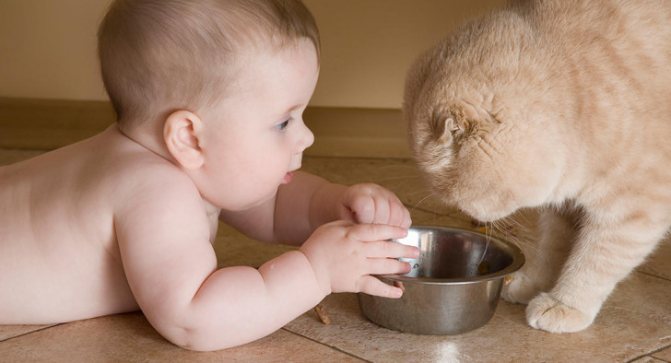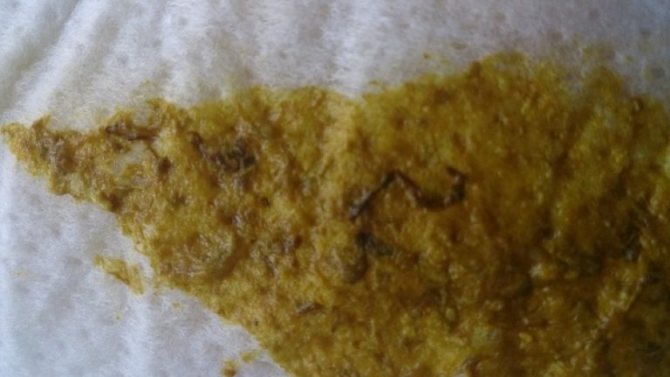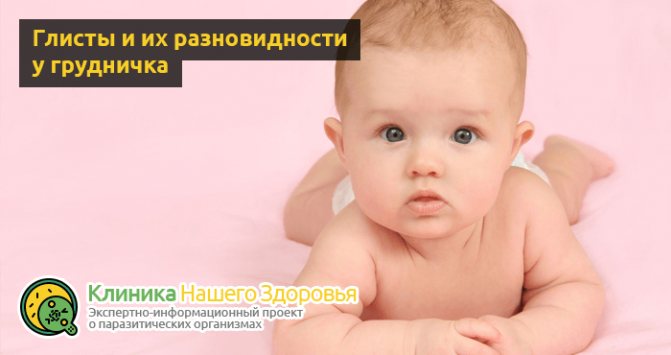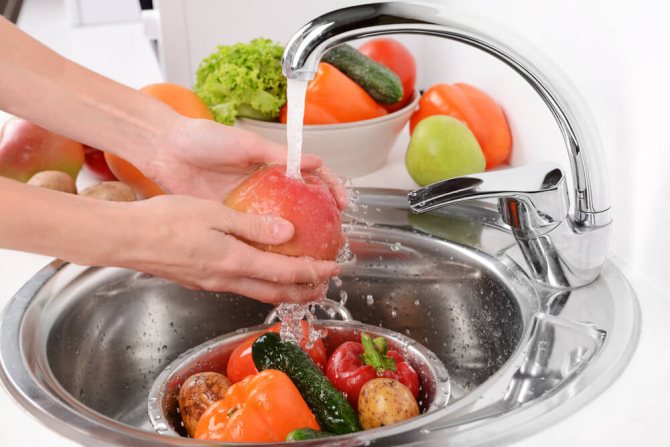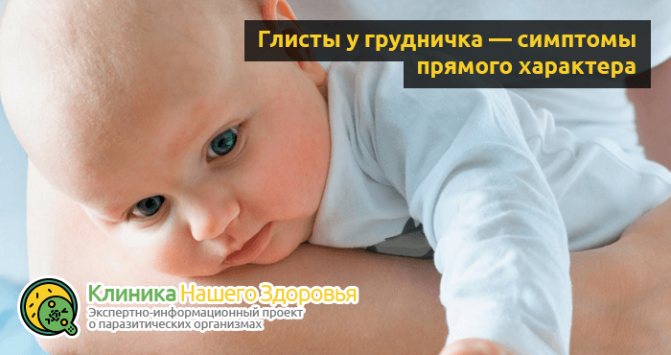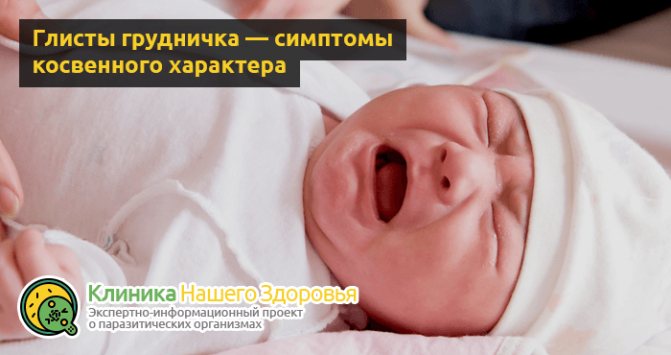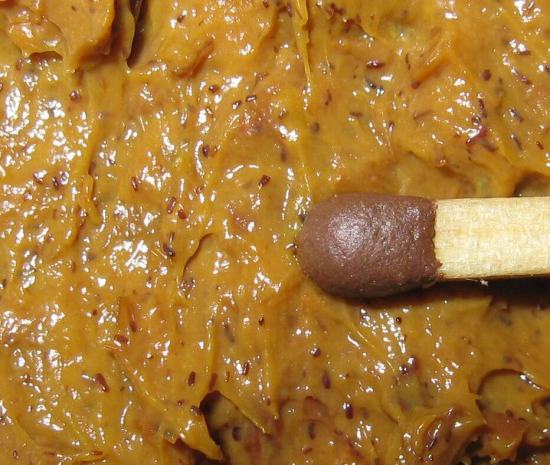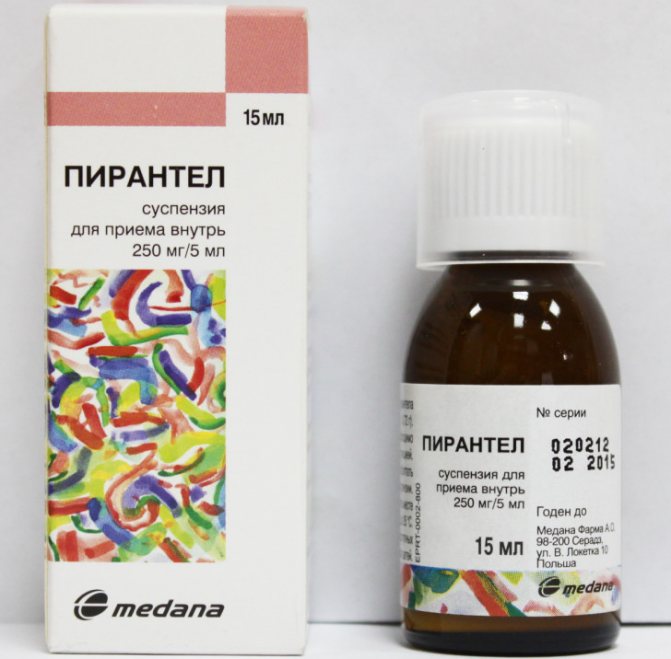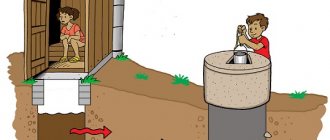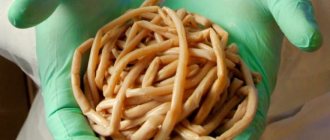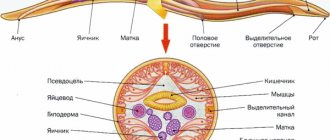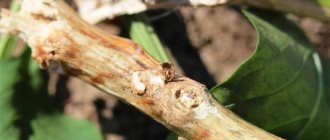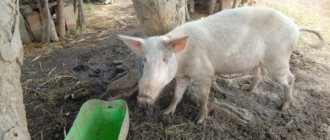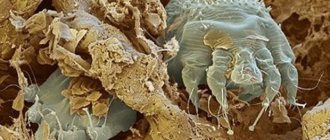It is difficult to visually determine how the worms look in the feces of a child. Parents should pay attention to the well-being of the child, also take into account the symptoms of the problem, which is mandatory. It is believed that helminthiasis is one of the most common diseases in babies. It is quite difficult to consider whether there is a worm in the feces, therefore, if suspicious manifestations are detected, it is recommended to consult a doctor and get tested. They will help in determining the treatment program. Parasite infestation occurs most often during outdoor play and entertainment.
The girl washes her hands after a walk
What are worms, what do they look like and what types are there in children?
Helminths (also called worms and parasites) are the general name for parasitic worms that live in the human body. The disease they cause is called "helminthiasis". Infection occurs when the eggs of an adult parasite enter the body. After their penetration into the gastrointestinal tract, larvae appear from them, which move throughout the body in search of an optimal habitat.
In favorable conditions for development, the larva turns into an adult, which has the ability to reproduce. This is how the human body is populated with worms. Most types of parasites during development and transition from one stage to another migrate through the internal organs.
In children, there are such varieties of worms as:
- Pinworms that cause the development of enterobiasis. These are white worms no more than 12 mm long. These parasites live in the small and large intestines, laying eggs in the anus and fixing them in the folds of the skin. Since the laying of eggs often occurs at night, the child, feeling itching and burning in the anus, may involuntarily touch it, as a result of which the eggs end up under the nails, on bedding and underwear. As a result, pinworms are passed on to other family members. This disease is most dangerous for girls, since parasites can lay eggs on their genitals, causing severe infectious lesions.
- Roundworms provoking the development of ascariasis. These worms reach 40 cm in length and 6 mm in diameter. They are very fertile, their eggs in large numbers come out together with feces. Symptoms of ascariasis include pain in the stomach and intestines, intoxication. If left untreated, it is possible to infect the lungs, heart and brain. Ascaris lives in the human body for about a year.
- Vlasoglava causing trichocephalosis. They have a whitish tint and can reach 5 cm in length. The incubation period of the disease lasts up to one and a half months. Adults live in the initial section of the colon. Their lifespan can be extremely long - up to 6 years.
- Giardia, provoking the development of giardiasis. They look like microscopic worms that are pear-shaped and have 4 pairs of flagella and a suction cup. Worms of this type inhabit the intestines and gallbladder of the child. It is difficult to identify signs of giardiasis, especially in infants. Symptoms are often confused with a cold, flu, or allergic reaction.
- Toxocars that cause toxocariasis.Most often, their signs are detected in babies from 1 to 4 years old. Adult worms are light yellow in color and reach 18 cm in length. Toxocariasis affects the digestive tract, respiratory and cardiovascular systems and is transmitted to humans from dogs and cats.
READ ALSO: what worms look like in children and photos
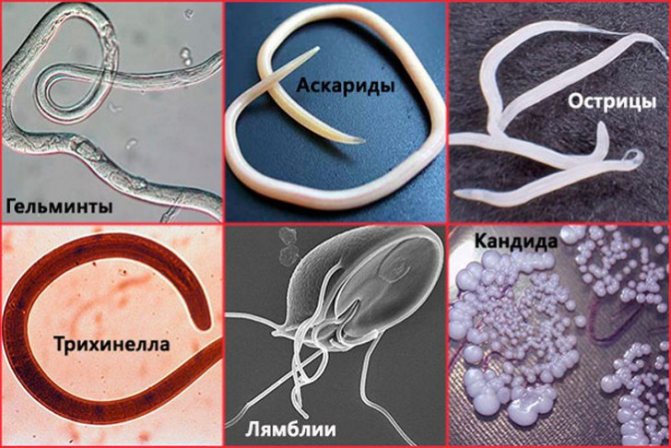
The photo shows what these types of helminths look like. In order to avoid infection of children with helminthiasis, parents must strictly observe preventive measures.
Types of helminths
Worms are divided into 3 groups:
- round or nematodes (pinworms, roundworms, whipworm, trichinella);
- flat tapeworms or cestodes (broad tapeworm, echinococcus, pork, rat, dwarf or bovine tapeworm);
- trematodes or flukes (hepatic, feline or Siberian fluke, schistosoma, etc.).
Among other things, parasites are divided into intestinal and non-intestinal, respectively, they can live in the intestines, liver, lungs, muscles, etc., and spread throughout the body with the blood stream. However, more often they settle in the digestive organ, pinworms cause enterobiasis, roundworms provoke ascariasis.
Causes of the appearance of worms in the child's body, ways of infection
In newborns (infants up to 28 days of age), parasites are extremely rare. Perhaps intrauterine infection or during birth - from the mother. Infants under the age of 1 year are also infrequently infected with worms - babies mostly come into contact with adults and they can “get” worms only if the caring people do not observe basic hygiene rules.
READ ALSO: How are worms treated in a 1-year-old child?
Curious and agile babies who begin to crawl actively pull objects into their mouths that can be infected with helminth eggs. There are the following ways of colonizing the body of younger and older babies with parasites:
- getting into the mouth of sand, earth or dust contaminated with worms while playing in playgrounds and walking in the open air;
- the use of unwashed vegetables, fruits, berries and herbs, on which the eggs of worms are laid;
- use of common cutlery and pots in preschool institutions;
- infectious insect bites;
- the use of contaminated milk and meat that has not undergone sufficient heat treatment;
- communication with animals that are carriers of the disease.


General recommendations for the treatment of worms
To achieve the removal of parasites from the body as soon as possible, you must follow the recommendations below, which are also used as a prophylaxis:
- Observe the rules of personal hygiene: wash the child's toys with antibacterial soap. Preferably a couple of times a week.
- Trim your nails regularly.
- Monitor the timely change of diapers. Pay special attention after sleep and night.
- Make sure that the child cannot take objects in his mouth.
- The baby's clothes should be washed regularly and ironed on both sides.
- Change bed linen frequently.
- Systematically do general cleaning of the premises.
- Give meat and fish to good heat treatment, and rinse fruits and vegetables thoroughly.


Symptoms of helminthiasis in a child
At the initial stage, the habitation of helminths in the body of a child, especially a baby, is not associated with obvious signs. The symptomatology of the disease depends on the type of parasite. However, there are general symptoms indicating that the baby has helminthiasis. They are divided into signs of a direct and indirect nature.
Direct
You can understand that a baby is infected with parasites by a number of symptoms. These include the following phenomena:
- a sharp loss of body weight;
- the presence of hyperthermia, not associated with inflammatory processes;
- attacks of headache and nausea;
- urge to vomit;
- alternation of diarrhea and constipation;
- increased or loss of appetite;
- inflammation of the genitals;
- pain in the navel area;
- itching and burning in the anal area, especially at night;
- the presence of dead or live parasites in the stool;
- plaque on the tongue (for more details, see the article: white plaque on the tongue of an infant as a result of the presence of worms in the intestines);
- circles under the eyes (see also: causes of the appearance of circles under the eyes of a child);
- poor weight gain (in babies);
- increased salivation during sleep;
- sleep disturbance, anxiety, moodiness (symptoms are typical for babies under one year of age).


Urinary incontinence and teeth grinding at night can also indicate a child has worms. These signs do not always appear simultaneously, they can occur separately.
READ IN DETAIL: What symptoms appear in children with worms?
Indirect
Symptoms of an indirect nature, in addition to helminthiasis, may indicate the presence of other pathological processes in the baby's body. For this reason, such manifestations give rise to suspicion of a child being infected with parasites, but an accurate diagnosis cannot be made on their basis. Among the indirect symptoms are:
- an increase in the frequency of colds due to a decrease in the body's defenses;
- skin lesions in the form of seborrhea and dermatitis;
- exacerbation of allergies.
Helminthiasis is often accompanied by allergic reactions and unreasonable appearance of rashes on the skin. If, at the same time, the child's immunity has dropped sharply, and the baby has become constantly ill, it must be checked for the presence of parasites.
How can a baby get infected?
Basically, infants have two types of worms - roundworms and pinworms. They do not necessarily appear in a family where hygiene rules are not followed. Often, even the cleanest mothers find signs of helminthiasis in their child.
Consider how to understand that a child is in danger, and how parasite infestation can occur.
- Worms in newborns most often appear due to the presence of parasites in the mother's body. Their larvae easily enter the child's body in the same way as nutrients - through the umbilical cord. The child is born already infected.
- Worms in children under one year old may appear due to contact with an infected person. For example, if there is an older kid in the house who goes to kindergarten, plays in the sandbox and visits other places where there is a risk of catching helminths. The risk of infection is especially increased when it is summer. An older child can "bring" them home and pass them on to a younger brother or sister upon contact, because children love to kiss and "squeeze" the smallest family members.
- Poorly washed vegetables, fruits and herbs, as well as insufficient heat treatment of meat and fish can cause worms to appear in an infant. All mothers need to be careful when preparing complementary foods for their baby!
- If the house is dirty, mom and other family members do not wash their hands, then any contact with the baby is potentially dangerous. The same applies to pets: as soon as a baby appears in the house, they must be treated with appropriate drugs. It is necessary to take antihistamines by mouth, even if such things were previously neglected.
- In addition, worms may appear in a baby with a fallen and not properly treated pacifier, teething device, etc. First, the parasites enter the stomach, and from there they move to the intestines, where they settle.
The presence of worms in infants causes great harm to the body of the crumbs. For their development, worms take away the nutrients they need, which are so necessary for an infant. Depletion of the newborn occurs. At the same time, the appetite of the crumbs is preserved or, conversely, increased. The most common type of worms in infants are pinworms. Small, thin, thread-like worms are found around the anus.
Diagnostic methods
If you suspect a helminthic invasion of the child, you need to show a pediatrician or an infectious disease specialist. The specialist will prescribe such types of examinations as:
- clinical blood test - with helminthiasis, anemia, eosinophilia and an increased level of ESR are detected (we recommend reading: blood test for ESR in children: what is the norm?);
- urine test - in the presence of helminths in the body, the content of the epithelium exceeds the norm;
- analysis of feces for eggs of worms - the examination is carried out three times, while only fresh biomaterial is analyzed;
- scraping for enterobiasis - reveals the presence of pinworms (see also: photo of pinworms in children).
The doctor may issue a direction for an X-ray of the lungs to exclude ascariasis. An enzyme-linked immunosorbent assay will determine the presence of antibodies to the causative agent of the disease.


Features of the treatment of helminthiasis in children of different ages
Effective antiparasitic drugs are toxic, so their use, especially when it comes to treating children, is agreed with a specialist. Anthelmintic drugs are prescribed based on the diagnosis. Their uncontrolled use is strictly prohibited. After contacting a doctor and consulting with him, it is possible to use folk remedies.
Home therapy
Deworming of children is carried out in 5 stages. The first is that for 3 days the little patient takes drugs of the enterosorbent group (Smecta, Sorbex) and antihistamines (Fenistil, Loratadin). The next step shows a single use of antiparasitic tablets or suspensions, for example, Vermox and Pirantel (we recommend reading: how to drink Pirantel in suspension for children?). Further, to normalize digestion, enzymes such as Creon, Panzinorm or Pangrol are used.
READ ALSO: how to use children's "Creon"?
Since helminths provoke a violation of the intestinal microflora, at stage 4, dysbiosis is eliminated with the help of probiotics (Acidolac, Latsidophil).
READ ALSO: symptoms and treatment of intestinal dysbiosis in infants
At the final stage of cure, the child is shown vitamin therapy to increase the vitality of the body. During treatment, it is recommended to limit or completely exclude sweet foods from the diet.
Folk remedies
There are alternative medicine ways to fight parasites. These methods of removing helminths include:
- enemas with decoction of tansy flowers;
- the use of peeled pumpkin seeds and juice;
- reception of infusion of fennel or a decoction of wormwood, tansy, dandelion, thyme and cloves.
Experts advise using these methods only as an adjunct to drug treatment. They are also suitable for the prevention of helminthiasis.
Folk remedies
With a small infestation from worms for children under one year old, folk remedies will help to save. These include raw pumpkin or zucchini seeds, which need to be dried, peeled and minced in a meat grinder. After that, a spoonful of honey is added to the finished mixture, and if the baby is already 9 months old, then give the product along with complementary foods.
Worms in a 3 month old baby can be removed with a cleansing enema with a cool chamomile decoction. The procedure is carried out in the morning and at night. After the feces and enema liquid have left the baby, the skin around the anus is smeared with zinc ointment, which adversely affects the eggs of parasites and adults. Therapy can last 4 months or more, depending on the degree of damage to the body and compliance with the pediatrician's prescription.
Along with medications, treating worms in children with folk remedies will help alleviate the discomfort due to worms in the body. A natural remedy for worms will not necessarily get rid of the worms in your child, but it will help in treating and preventing infection.
- Garlic is a natural anthelmintic for children.It is known to be effective against parasitic worms. Raw garlic contains amino acids, sulfur, which will help kill and rid the body of parasites. Eating three cloves of raw garlic on an empty stomach will help with complex deworming.
- Papaya is the best health food. Unripe papaya has an enzyme called papain that acts as an anthelmintic agent to kill worms in the intestines. In addition, papaya seeds are used to expel worms from the stomach. Grind papaya seeds and stir a tablespoon of the mixture in warm milk or water. Ask your child to drink the drink in the morning, three days in a row. Combine one tablespoon of raw papaya and one tablespoon of honey in warm milk or water. Drinking this drink on an empty stomach helps drive out intestinal worms.
- According to research, pumpkin seeds help in expelling intestinal parasites. The seeds contain cucurbitacin, which paralyzes pests and makes it difficult for them to survive in the body. Offer your child a spoonful of pumpkin seeds with honey. Boil a spoonful of peeled and crushed pumpkin seeds in three glasses of water. Let the drink sit for half an hour. Offer to the child when the liquid has cooled down.
- Chinese bitter gourd. Although slightly sour in taste, it is very effective in fighting intestinal worms. Mix a cup of bitter gourd juice with water and honey and feed to your child twice a day.
- Carrots contain vitamin A, which boosts immunity and allows the body to fight any intestinal worms before they have completely colonized the body. Eating carrots on an empty stomach will help neutralize persistent parasites in the body and also prevent re-infection.
- Turmeric is a natural antiseptic and helps in eliminating all types of intestinal worms. You need a glass of warm water mixed with one spoonful of turmeric, give the child from worms once a day for five days.
- Coconut has strong antiparasitic properties, making it effective in treating worms. You can use fruit or oil to kill worms. Have your child eat a tablespoon of ground coconut daily with breakfast. Keep using this home remedy for a week. Concentrated coconut oil contains medium chain triglycerides that will help remove worms from your baby's body. Taking four to six teaspoons of coconut oil every morning for a week will boost immunity and prevent worm infestation from recurring.
- Clove kills existing intestinal worms and their eggs and also prevents future infections. Add a teaspoon of cloves to a glass of hot water and let sit for 20 minutes. Drink this water three times a week to avoid contamination.
- Onion juice helps fight roundworms. Take the onion and chop it well, drain the juice from the onion mixture. Consume it in the morning on an empty stomach.
- Indian lilac has antiparasitic properties and can kill various intestinal worms. Combine the powdered leaves in warm milk and honey. Offer to your child twice a week.
Traditional home remedies can help relieve the infection, but they cannot completely cure it. They are not a substitute for prescription medications.
Preventive actions
To minimize the risk of parasite infestation, a number of rules must be followed. The child should be taught to wash hands when coming from the street, after using the toilet or playing with animals, and before every meal. This should be done with soap and hot water for at least 15 seconds, and preferably longer.
Unwashed vegetables and fruits from the garden are taboo. Only carefully processed gifts of nature should be in the hands of a young eater. The water used by children must be purified or boiled. Children should not be allowed to swim in muddy waters.
Loading ...



